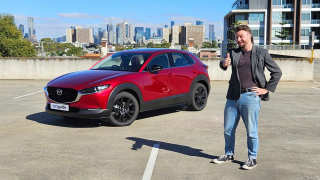It's Holden, Kev, but not as we knew it | comment

Before the Rudd Government rushes to put its signature on a crisp cheque to Holden for a further $200 million in bailout money it may want to pause for a moment to consider what exactly it is saving.
The Holden that the Federal Government is trying to rescue is not the same Holden we’ve grown to know and love since Prime Minister Ben Chifley rested his knuckles on the first Holden in 1948 and declared her “a beauty”.
For starters the workforce is a fraction of the size it once was. Holden had a blue-collar workforce of more than 7000 just 10 years ago. Today it employs just 1700 workers on its car assembly line. Taxpayers are spending more money today to keep fewer workers employed at Holden and its parts suppliers than they were 10 years ago.
Today’s Commodores -- and most of Holden’s big-selling sedans over the past 65 years -- were designed and engineered from the ground up in Australia and drove jobs in design and engineering as well as manufacturing.
But the cars that Holden plans to build in Australia beyond 2016 -- the changeover point for the current Cruze small car and Commodore range -- are global designs that require very little localisation. And that means Holden will need fewer people to design, engineer and build them.
Holden has already openly declared it cannot attach job guarantees to any future government funding because it needs to be able to adjust vehicle output and workforce numbers to suit market conditions.
The Cruze is already made in eight other General Motors factories including Asia-Pacific neighbours China, South Korea and Vietnam where labour costs are a fraction of Australia’s. Holden has already said it is cheaper and more profitable to import the Cruze from one of these countries. Who knows? They might even be cheaper for us to buy if sourced overseas.
Holden claims the car that replaces the current VF Commodore will wear a “Commodore” badge -- but it will be a large front-drive sedan designed for global markets. The type of car that Holden has historically mocked. The 2017 Cruze and Commodore, therefore, will in fact be about as Australian as a Toyota Camry.
It would be a national tragedy to lose car manufacturing in Australia but it’s time to ask ourselves at what cost are we prepared to hang on to an industry in decline will little signs of hope?
There are no harder working employees on the planet than auto factory workers. The work is technical yet done in trying conditions amid heat, sweat, grease and machinery that can kill if you turn your back on it.
But the reality is the domestic new-car market is too fragmented to build a top-seller in sufficient volume to justify the investment in local manufacturing -- and the strong Australian dollar makes exports unviable. Check.
Australia’s three manufacturers combined today do not produce enough cars to reach the global industry minimum average output for one. When Ford goes no later than 2016, there will be even further pressure on the two remaining manufacturers: Toyota and Holden. Checkmate.
When Holden announced the $275 million rescue package in March last year -- with Julia Gillard standing alongside the very same 48-215 Holden sedan that Chifley so cherished -- we thought Holden’s woes were over. But alas they are not. Ford’s shutdown delivered Holden more bargaining power than it’s ever had, and the hand is out again.
This proposed new round of taxpayer funding might eke Holden through the next phase -- or this Federal election campaign -- but what happens next time? How much more money must be pledged before the Australian public decides enough is enough?
This reporter is on Twitter: @JoshuaDowling











Comments